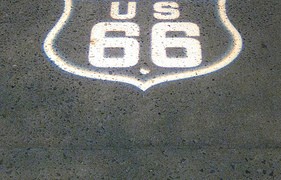
By way of followup to the previous post, it’s probably wise to broach the topic of corporate and individual worship more thoroughly. Please note that the earnestness of this post topic is best served (here, in this venue, anyway) when swathed in a modicum of levity.
This time around, I’d like to discuss this, not just post my thoughts. I see a great benefit in conversation here; and saw it already and especially over at Stand Firm in the Faith: Anglicanism in America. There, Matt Kennedy covered my recent article (On Being Embarrassed When Worship Songs Seem Sexual). I appreciated reading the several dozen responses, and found most of them helpful. You can also read them here. After you reflect on this topic, whether you read the other responses or not, I hope you too will respond with your own thoughts or insights on the matter.
As I mentioned in the last post, personal worship and devotional practices, such as involvement in literature (biblical or otherwise), poetry, songs, and psalms may have a decidedly personal angle (or perspective) as relating to God. Also, it’s not just a contemporary convention that worship “songs” (most of which are prayer-like in structure and form) focus on the individual rather than, or at the expense of, the corporate church assembly.
The Romantic period gave us plenty of examples of this phenomena in art and literature. Even earlier, John Donne offered up intimate imagery within various genres. One example is his Holy Sonnet 14.
John Donne (1572-1631)
Holy Sonnet XIV:
Batter my heart, three-person’d God ; for you
As yet but knock ; breathe, shine, and seek to mend ;
That I may rise, and stand, o’erthrow me, and bend
Your force, to break, blow, burn, and make me new.
I, like an usurp’d town, to another due,
Labour to admit you, but O, to no end.
Reason, your viceroy in me, me should defend,
But is captived, and proves weak or untrue.
Yet dearly I love you, and would be loved fain,
But am betroth’d unto your enemy ;
Divorce me, untie, or break that knot again,
Take me to you, imprison me, for I,
Except you enthrall me, never shall be free,
Nor ever chaste, except you ravish me.
It seems, this sonnet, and countless other early examples of a similar sort, were not meant for corporate participation. This stands in contrast to the worship songs sung within church groups these days. Nevertheless, these works provide vehicles for deeper communion with God. They may easily benefit our spiritual formation.
At Stand Firm in the Faith, Carl wrote:
This offers an excellent point to consider. I’ve heard many minters tell their audience that church is about worship (not performances, decor, fellowship, good preaching, etc.). Haven’t you? We may quickly assume, though, that church should be about our worship experience. Instead it is centered on the Church–the people Christ has saved–offering adoration to the Creator and Savior, whether we are conscious of it, or not.
Incidentally, worship happens with Christians past, present, and future, which is another reality we miss with regularity. So, it’s a Christian worldview, not merely a reduction of that. Worship mustn’t be viewed chiefly as an opportunity of personal expression to God, Jesus…and Spirit. Therefore, if worship is selfish, it’s not worship (of God) at all.
The Christian mystics throughout Christian history may have seen this sort of intimacy differently. This will take some research for me to know for sure, but if any of you have insights here, please share them. I would deeply appreciate it.
A crucial question to ask ourselves, or to those we minister: Is corporate worship intimate to compensate for a lack of intimate personal devotional practices, and a deepening relationship with God?
What about you:
Are your times of personal devotions usually more or less intimate than your corporate worship times?








